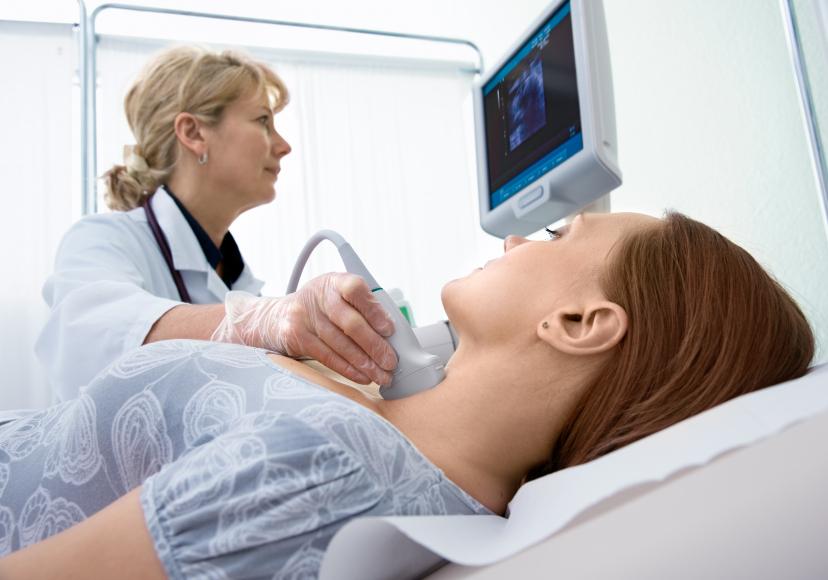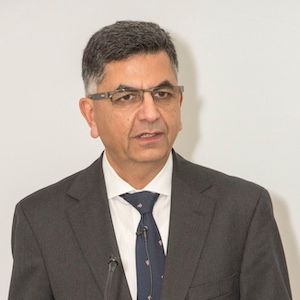Article
No Radioiodine Proven Noninferior to Postoperative Radioiodine After Thyroidectomy in Low-Risk Thyroid Cancer
Author(s):
The ESTIMABL2 trial indicates a follow-up strategy not involving use of radioiodine was noninferior to ablation strategies with radioiodine for the occurrence of functional, structural, and biologic events up to 3 years after thyroidectomy.

Results of the ESTIMABL2 trial suggest there may be no need for use of radioiodine following thyroidectomy in patients with low-risk thyroid cancer.
A prospective, randomized, phase 3 trial with more than 700 participants, results indicate a follow-up strategy not involving use of radioiodine was noninferior to ablation strategies with radioiodine for the occurrence of functional, structural, and biologic events up to 3 years after randomization.
“Our randomized trial addressed the usefulness of follow-up without postoperative administration of radioiodine in patients with low-risk thyroid cancer undergoing thyroidectomy. We observed that less than 5% of the patients in the two groups had events that included abnormal findings on whole-body scanning or neck ultrasonography or elevated levels of thyroglobulin or thyroglobulin antibodies during the first 3 years of follow-up,” wrote investigators.
Conducted with support from the French Ministry of Health through a grant from the National Cancer Institute, the ESTIMABL2 trial was designed as prospective, randomized, phase 3 trial, assessing a strategy with and without postoperative administration radioiodine in patients from 35 centers in France who received care between May 2013 and March 2017. From these 35 centers, investigators identified 776 to undergo randomization in their trial in a 1:1 ratio to ablation with postoperative administration of radioiodine (1.1 GBq) after injections of recombinant human thyrotropin or to receive no postoperative radioiodine.
The primary intent of investigators was to assess the noninferiority of an approach with no radioiodine therapy compared to an approach with postoperative radioiodine therapy for a composite end point that included functional, structural, and biologic abnormalities up to 3 years after thyroidectomy. Noninferiority was defined as a between-group difference below 5 percentage point in the percentage of patients who did not experience events that included presence of abnormal foci of radioiodine uptake on whole-body scanning that required subsequent treatment, abnormal findings on neck ultrasonography, or elevated levels of thyroglobulin or thyroglobulin antibodies.
The study population had a mean age of 52 years and 83% were women. Histologic analyses revealed papillary tumors among 95.9% of the population and pathological tumor–node–metastasis (pTNM) was pT1b N0 or Nx in 81.1%. Of the 776 patients who underwent randomization, 730 patients were included in the final analyses, with 363 representing the radioiodine group and 367 representing the no radioiodine group.
At 3 years, no primary outcome events were experienced by 95.6% (95% CI, 93.0-97.5) of those in no radioiodine group and 95.9% (95% CI, 93.3-97.7) in the radioiodine group (between-group difference, -0.3 [two-sided 90% CI, -2.7 to 2.2]), which investigators pointed out fell within the noninferiority cutoff for nonuse of radioiodine. Of the events observed in the trial, structural or functional abnormalities were documented among 8 patients and biologic abnormalities were documented in 23 patients with 25 events. Investigators noted events were more frequent among patients with a postoperative serum thyroglobulin levels greater than 1 ng/mL during thyroid hormone treatment.
Investigators also made note of several other highlights from the results of the trial. These included a lack of treatment-related adverse events, the notion that presence of a BRAF mutation is not be an indication for radioiodine administration, and a tumor size of less than 14 mm as a factor with prognostic value for predicting risk of an event.
“In this randomized trial involving patients with low-risk differentiated thyroid cancer, we found that follow-up without the use of radioiodine after thyroidectomy was noninferior to the administration of 1.1 GBq of radioiodine after the administration of recombinant human thyrotropin,” investigators added.
This study, “Thyroidectomy without Radioiodine in Patients with Low-Risk Thyroid Cancer,” was published in the New England Journal of Medicine.




